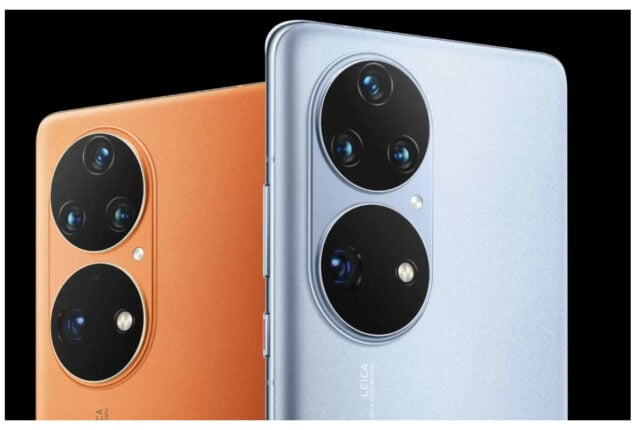Huawei Mate X3 Unveiled with waterproof, lightweight body
The Huawei Mate X3 is official, and it's impressive on a number of...

Huawei P60 series out with variable aperture lens & 66W charging
Huawei has just released three phones in its P60 series. There’s the standard Huawei P60, the Huawei P60 Pro, and the Huawei P60 Art, which features a more avant-garde design.
The main hardware of all three phones is the same: a 6.67-inch LTPO OLED screen with FHD+ resolution 1220 x 2700 pixels with a refresh rate of 1-120 Hz. The phone’s panel is shielded by Kunlun glass and has a fingerprint scanner.
The P60 series excels at cameras, so let’s shift our emphasis for a moment. The 48MP main camera on all three phones has a RYYB sensor and OIS. The sensor has a variable aperture of f/1.4–f/4.0 with automated scene switching.

Depending on the shooting conditions, this method should catch the optimal quantity of light. According to Huawei‘s marketing brochures, the new RYYB sensor’s light-capturing capabilities are industry-leading. The main camera can also record footage in 4K resolution.

Moving on to the ultrawide sensor, the P60 and P60 Pro both have a 13MP sensor with an f/2.2 aperture, while the P60 Art has a 40MP sensor with the same aperture. The telephoto lens comes next; the P60 includes a 12MP telephoto module with an f/3.4 aperture, OIS, and a 125mm equivalent lens. The P60 Pro and P60 Art now include 48MP telephoto modules with OIS and a 90mm comparable lens with 3.5x optical and 100x digital zoom.

The telephoto lens on the P60 Pro and P60 Art features an f/2.1 aperture, which should perform far better in low-light situations than competing modules from other manufacturers. Huawei claims that its new 48MP telephoto lens can catch the most light in the industry, which is a bold claim. In addition, the sensor has three-axis stability.
The P60 series includes Huawei’s XD Fusion Pro texture engine, which attempts to replicate object textures as closely as possible to how they are perceived by the human eye.

The Snapdragon 8+ 4G chipset is used in all three P60 phones, which is an LTE-only variant of the Snapdragon 8+ Gen 1 SoC from last year.
The ability to broadcast and receive satellite communications is another notable characteristic of the P60 series. When there is no ground signal, you can send and receive text messages, but this capability will be limited to China.

The Huawei P60 and P60 Pro have 4,815 mAh batteries and support 66W and 88W wired charging, respectively. Both models allow 50W wireless charging. The P60 Art has a slightly greater battery capacity of 5,100 mAh and a silicon-carbon cell, which provides higher energy density than lithium-ion-based equivalents. All three phones come with Harmony OS 3.1 and are IP68 rated.
The Huawei P60 and P60 Pro are available in Feather Purple, Feather Black, Emerald Emerald, and a limited Rococo White. P60 Art is available in Blue Sea and Quicksand Gold.

The P60 is priced starting at CNY 4,488 ($657) for the base 128GB model and rising to CNY 5,988 ($877) for the 512GB model.
The 256GB P60 Pro costs CNY 6,988 ($1,023), while the 512GB model costs CNY 7,988 ($1,170).
The P60 and P60 Pro will go on sale in China on March 30. The Huawei P60 Art will be available beginning April 7. International pricing and availability will be announced later.
Catch all the Sci-Tech News, Breaking News Event and Latest News Updates on The BOL News
Download The BOL News App to get the Daily News Update & Follow us on Google News.